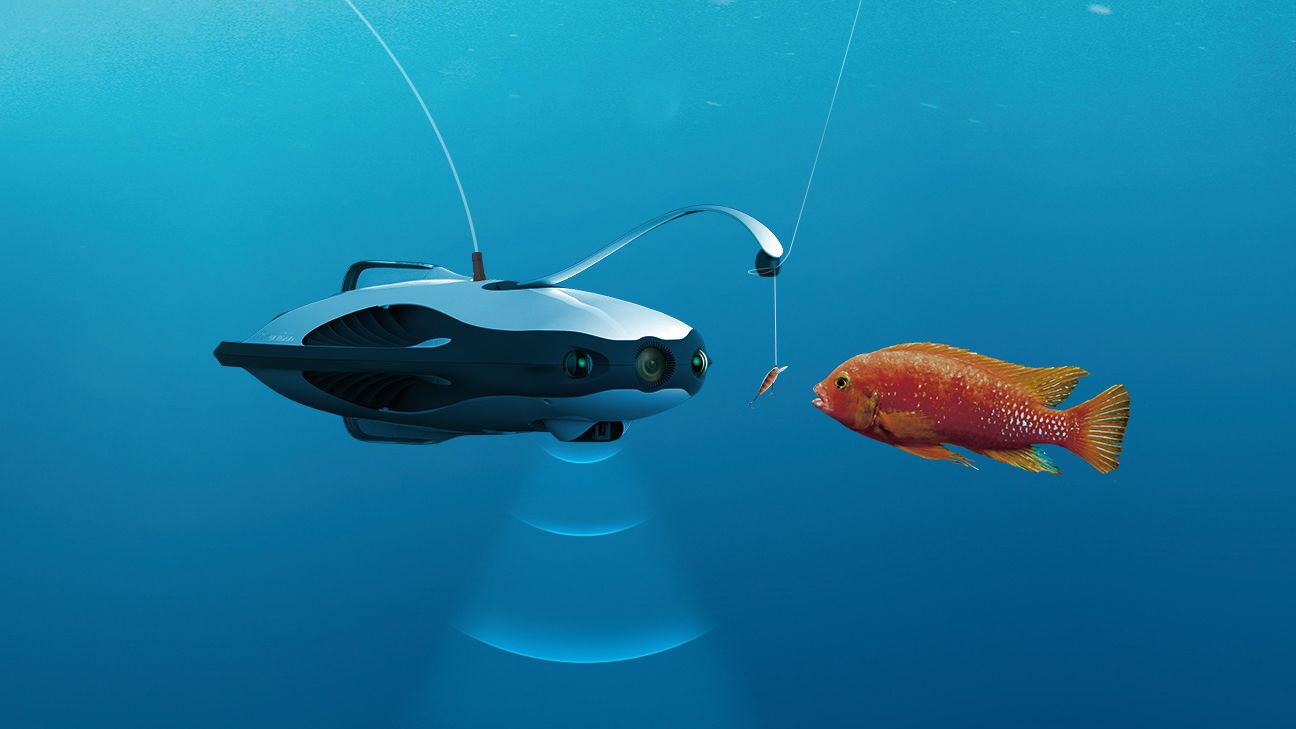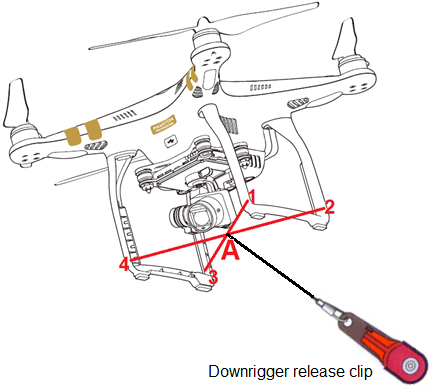
Drones (specifically quadcopters) have made it on to the fishing scene as an enabling technology to basically cast your line out really, really far. This guide will help you do that step-by-step.
Keep in mind, however, this is not attaching a fishing line, hook, and bait directly to the drone and working the bait with the drone.
Although this is possible and people have caught fish like this, it’s probably not the most efficient use of the battery or the drone. Imagine a large fish dragging your drone into the water. That would suck.
Instead, you would use it to transport the line and bait to the location you want to fish and then you can control it back. This allows you to reach places that you normally could not with just you and your rod. Most people have been using drones for surf fishing but you can use this technique for fishing wherever you want.
The first step is getting a drone. It should have a good battery life, have a decent flying speed, be robust to winds, and be easy to control. A drone that has these qualities would be ideal to go fishing with.
Check out my analysis for which drone is the best to use when fishing so that you can pick your own. From that analysis, the best bang for your buck as of the writing of this is the DJI Phantom 3 (Standard version). It’s also one of the most popular drones out there at a decent price point and captures stunning video. The 3DR IRIS+ in at a close second.
Rigging the drone and “casting” your line.
1. You need to create some type of attachment point to your drone. To work the best, it should be centered in the middle of the body of the (see reference point A in diagram below). This will help avoid uneven loading on the propellers.

It’s advisable to NOT make this attachment to the gimbal or the camera as your payload may damage it. Instead, rig it to the legs or the landing gear of your drone. If there are no legs, use something rigid like the struts that attach to the motors.
For the DJI Phantom 3, this is as easy as tying 2, equal-length fishing line segments from points 1 to 3 and from 2 to 4. Make sure the knots are secure. You may want to fix the center point (point A) with tape.
With other drones, you do something very similar and achieve the same results.
2. The next step is to rig on a release mechanism. The best way to do this is to attach a downrigger release clip to the attachment point A. You can attach it by clipping or tying it or however you like. Just make sure it is secure.
The release clip will serve to hold your fishing line snuggly and let go when the time is right. The holding power on the clip is adjustable and will work with any weight that your drone can carry. Try this downrigger clip for best results or check out the store for more options.
3. The next step is to attach your fishing line to the release clip. Unlock the reel so that the line can freely extend without any resistance.
Fly the bait out to wherever the drop location is. Once you are there, lock your reel and fly the drone out until the tension pops the release clip. You might want to test this a couple times before actually doing it so you know that the tension on the clip is correct.
 I use this whiting rig a lot with this release clip setup and it works great.
I use this whiting rig a lot with this release clip setup and it works great.
4. The last step is simple. Fly your drone back so that it doesn’t fall into the ocean or wherever you are fishing. Happy fishing!
A few words of caution.
Pay attention to the winds. Certain drones have wind limitations and flying in excess of those levels and you may end up losing your drone. Skilled pilots may be able to fly in higher winds, but why risk it especially if you are over some body of water?
Make sure you are monitoring how far you are flying out. You don’t want to exceed the range of controllability and have your drone fall into the water. To retrieve the drone in case of an emergency, you can tie an additional line to the drone and pull it back in if for some reason it runs out of battery or loses connection. Of course, by that time, it could have dropped into the water. Check out some waterproof drones and various specs here.
The drone will have a decreased battery life when carrying your bait, clip, and line. Make sure you monitor this as well and don’t exceed the max payload of the aircraft.